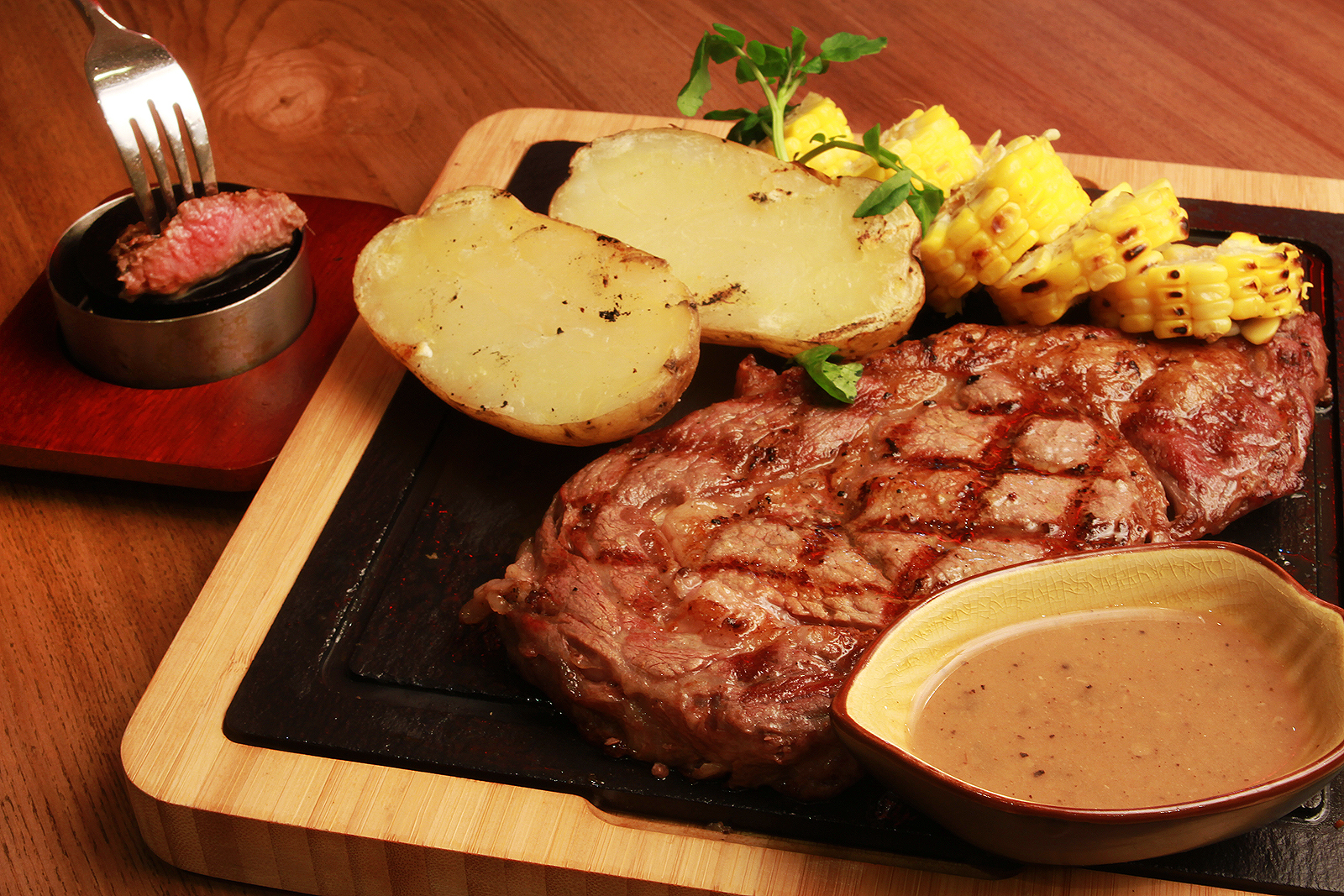
Foodies will delight in this steakhouse that serves not only meat and potatoes for eager carnivores but also pastas, pizzas, seafood dishes and salads. Restaurateur George Pua is carving a niche by offering quality steaks that are more affordable than those by other popular steakhouses.
George Town Super Steak at One Bonifacio High Street Mall is going all out with its kitchen equipment, Mibrasa, touted as the “Rolls Royce of charcoal ovens.”
While waiting for his flight at Singapore’s Changi Airport, Pua went to a restaurant and ordered a pork chop. At first bite, he marveled at the depth and evenness of flavor and the sublime tenderness of the meat.
A seasoned cook, he knew that pork chop is difficult to prepare because it requires quick cooking. It easily gets overdone or the outside gets tough and dry before the center is cooked. Pua went to the kitchen and saw the Mibrasa oven, a Spanish brand which takes the best rustic cooking methods and integrates them into modern technology. Favored by Michelin-star restaurants, this oven uses only charcoal and cooks the meat at extreme temperatures to seal in the flavors.
“There is no blood dripping from the meat. All the juices are inside,” Pua said.
In Barcelona, the principals took him to a Spanish restaurant where the jamon Iberico had him swooning. He returned to the place for three consecutive days to indulge in its umami flavor.
“I couldn’t forget the taste. We will be serving the Iberico shoulder here,” said Pua.
Generous portions
Super Steaks serves generous portions of porterhouse (P4,350 for 700 grams), dry-aged rib eye (P6,300), striploin (P2,199 for 375 g), rib eye (P2,329), and tenderloin (P1,869), which can be shared by two or three.
As a come-on for the lunch crowd, Super Steak offers a choice of beef teriyaki, satay beef, bistek Tagalog with rice, salad and dessert for P299.
Designed by a Japanese interior designer, the restaurant is divided according to its market segments.
At the family section, an accent wall evokes a cave painting on the story of fire. The bar for the after-office crowd is furnished with high tables and stools. The terrace overlooks the original The Fort where Pua’s other restaurants are located.
In 1996, Pua’s Meat Concepts Inc. started with the American franchise of Tony Roma’s steakhouse which operated for 22 years. He acquired two more franchises that he has since closed down. Gathering restaurant know-how from the franchises, Pua developed his own restaurant concepts.
“I wanted to share what I had tasted and experienced abroad to the local market,” he said. The kitchens of the international restaurant brands are led by foreign chefs who understand the nuances of their native cuisines.
K-Pub, a Korean restaurant, pioneered in the timed buffet. His Japanese restaurant, Ogawa, caters to a discriminating clientele.
Pua observed that the elite enjoyed the food in Japan but couldn’t find the same quality at a reasonable price in Manila. Being a food trader, he sourced the best possible ingredients from Japan.
With over 30 branches and upcoming restaurants, he attributes his success to taking risks. “I can turn a vision into a reality through determination. As they say, when there’s a will, there’s a way. Others are afraid to jump in because they don’t have the guts.” —CONTRIBUTED